Nikon Sportstar Zoom 8-24x25
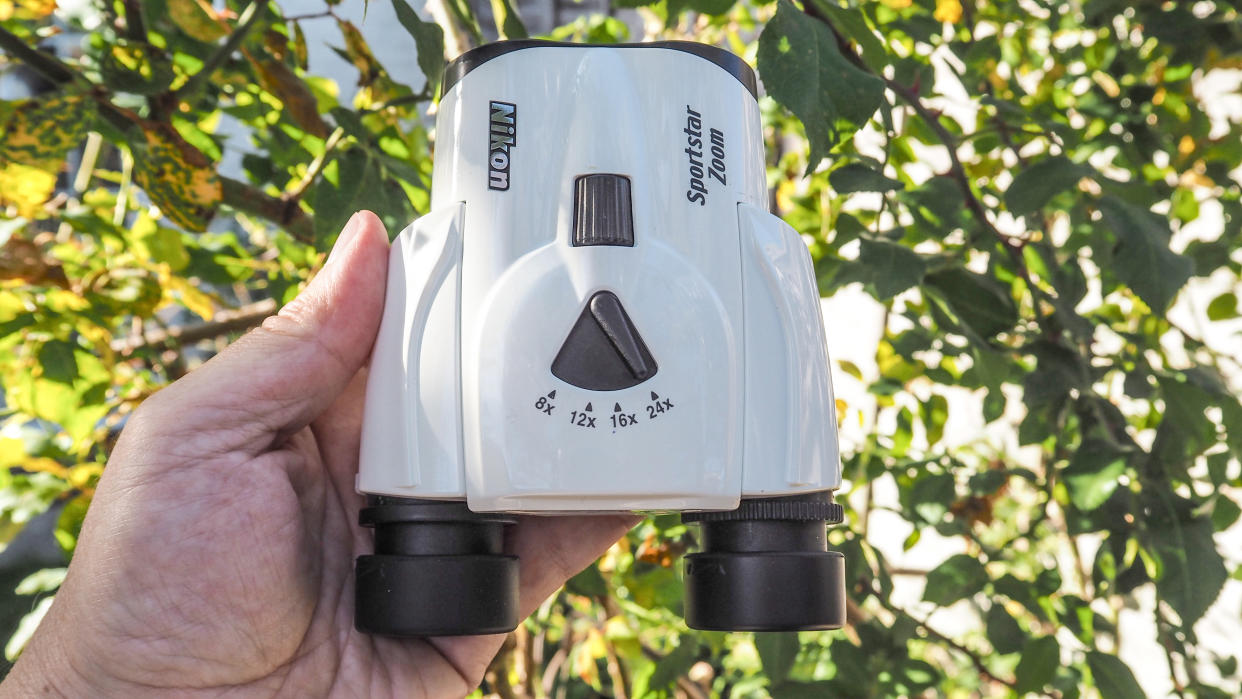
It’s happened to all of us at some point while using binoculars. Namely wishing we had a bit more power at our disposal and were able to zoom in just that little bit further to check a particular detail. Nikon thinks it has solved this frustration with its Sportstar Zoom. The zoom binocular places a menu of magnification settings literally at our fingertips, so we can start out wide and then zoom in closer.
The only downside to having this flexibility of view at our disposal is that we’ll pay a premium for the privilege, compared with what a basic 8x25 binocular from this brand or competitor would normally cost us.
Whether that’s worth it to you depends on the personal use you’ll put this zoom binocular to. While its name indicates it’s aimed at sports fans, of course it’s also eminently suitable for wildlife watching. Its flexibility suggests the Nikon Sportstar Zoom 8-24x25 binocular as good all rounder for travelers too wanting to pan across landscapes and perhaps zero in on a particular interesting feature. That’s on paper at least. So how does the Nikon Sportstar Zoom 8-24x25 shape up in practice?
Specifications
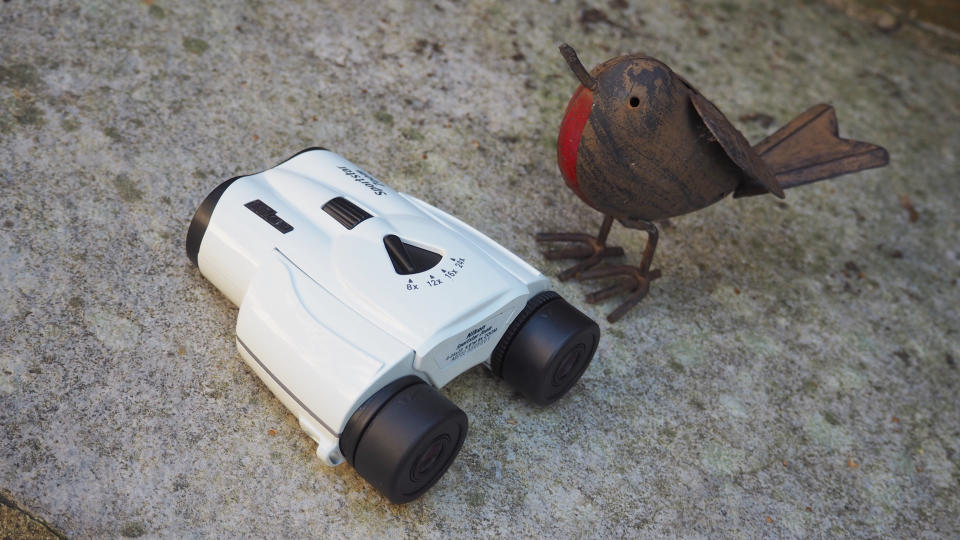
Magnification: 8x-24x
Objective lens diameter: 25mm
Field of view at 1000m: 80 metres (at 8x magnification)
Field of view at 1000 yds: 241 feet (at 8x magnification)
Closest focusing distance: 4m / 13.1 feet
Eye relief: 13mm at 8x
Weight: 305g / 10.8oz
Dimensions: 4.8x4x3.2inches / 123x109x51mm
Colors available: Black, white or blue
Key features
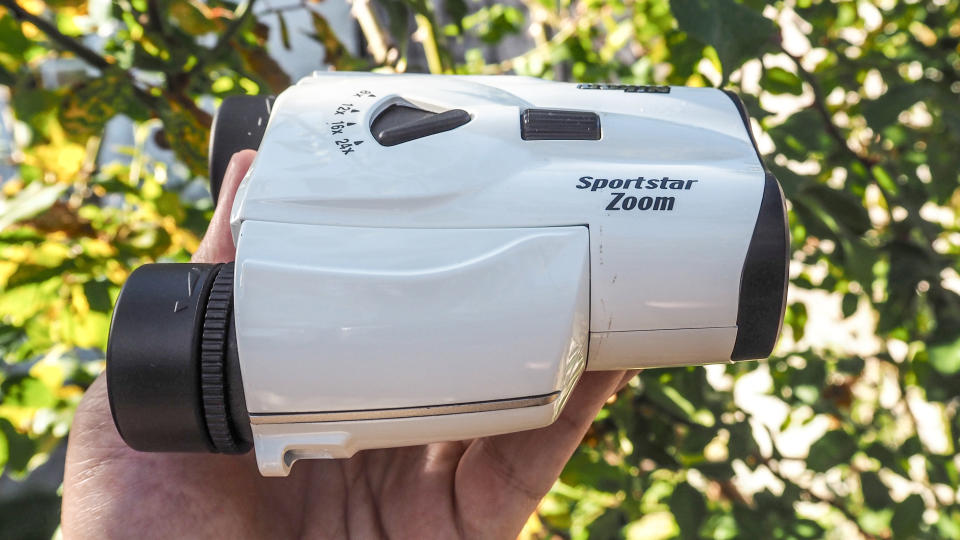
The 8-24x25 specifications here indicate a 25mm objective lens and the option of altering magnification from the usual 8x we regularly find on a binocular of this size, to a really quite impressive 24x. Nikon says that a space saving reverse porro prism design is to thank for keeping proportions manageably compact overall.
If we find the view a bit shaky at this maximum setting, which is a distinct possibility as the Sportstar is designed to be used handheld, there’s the ability to dial it back and choose from two in-between options – a still very useful 12x or 16x magnification.
As we’d expect from Nikon, the construction here includes anti reflective multi coated optics to boost image brightness and deliver accurate colours. While clarity may drop as light levels do, we reckon this is shaping up to be a decent all rounder.
Build and handling

Pick the Nikon Sportstar Zoom 8-24x25 binocular up and it looks and feels distinctly plastic-y to the touch, an impression amplified by the gloss exterior of the white version we had for review (black and blue versions are also available). That said, give its chassis a squeeze and it’s reassuringly solid. An earlier handler had left our review sample with a few exterior scuffs, but we do get a carry case provided out of the box, which at least will prevent this happening in transit.
Despite the wider range of observational choices it gives us, this device is relatively compact at 4.8x4x3.2inches. That’s broadly the same size as an old 8-track music cartridge or 2/3rds the size of a blockbuster paperback. This enables it to fit in a jacket pocket, backpack or shoulder bag relatively easily. A faux leather carry case is provided in the box, with a loop at the back for belt attachment. The zoom binocular is manageably lightweight too, with multi coated lenses and prisms maximizing light transmission and boosting our clarity of vision.
Magnification is adjusted via a centrally located zoom lever, just in front of the eyepieces, so we literally don’t need to take our eyes off the ball. However there’s no identifiable click when we switch from one magnification setting, helpfully printed atop the device, to its nearest neighbour, so we just need to rely on our own eyes as to the adjustments we’re making. One thing we did miss here is that this is not a hinged product, so inter-pupillary distance cannot be adjusted to exactly or more comfortably match our own eyes. We do however get Nikon’s regular features of twist-up eyecups for added comfort, and a dioptric adjustment wheel encircling the right eyepiece for fine tuning focus if required. Our review sample also came with slip-on protective eyecups for the rear of the device, but not lens caps at the front. As the lenses are recessed into the binocular housing, without spring loaded protectors to snap a lens cap into into place within the rim of the lens, this would not have been especially practical anyway.
Also recessed to the extent it’s pretty much buried in the bodywork is a centrally located focus wheel. With a ridged surface enabling our fingers to find it even when our eyes are glued to our subject, operation is swift and smooth, however, and we’ve no complaints. Nikon claims the low profile of the focus wheel also helps prevent snags.
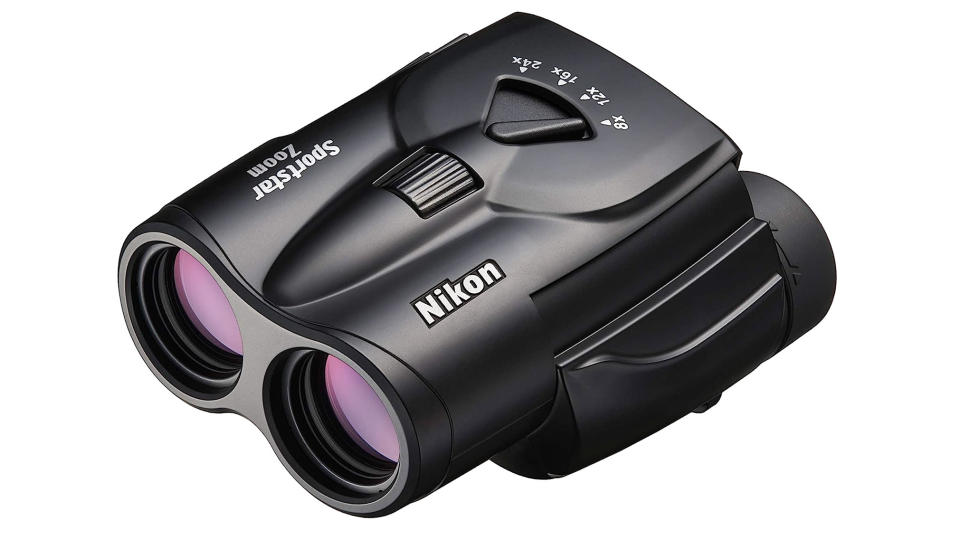
Versus
In terms of alternatives, Nikon can offer one itself. The Aculon T11 8-24x25 is a very similarly specified example, which also hits that sweet spot between portability, zoom power and cost. Its own manufacturer aside, most competitors likewise offer their own alternatives. Those seeking an example for stargazing may like to check out the very powerful Barska Gladiator Zoom 20-100x70 for example, on which everything is bigger. However a tripod is required to make this alternative practical for use.
Slightly more manageable as an option for birders is the retro-looking Celestron Up Close G2 10-30x50 binocular, though it’s still heavy compared with what we have here due to that extra zoom power and larger objective lens. If weight is an issue, a zoom monocular is another alternative. Here Nikon’s arch-rival Canon provides one in its PowerShot Zoom Monocular, on which a minimum 100mm focus setting is adjustable to a 800mm equivalent. It can even capture stills and videos to microSD card too, though requires a battery to power it.
Staying with non battery-operated compact zoom binoculars, a further example comes in the Pentax Up 8-16x21. This handheld porro prism option is not quite as high powered as our Nikon example in terms of maximum magnification, but it looks pleasingly futuristic while being very compact with it.
Performance
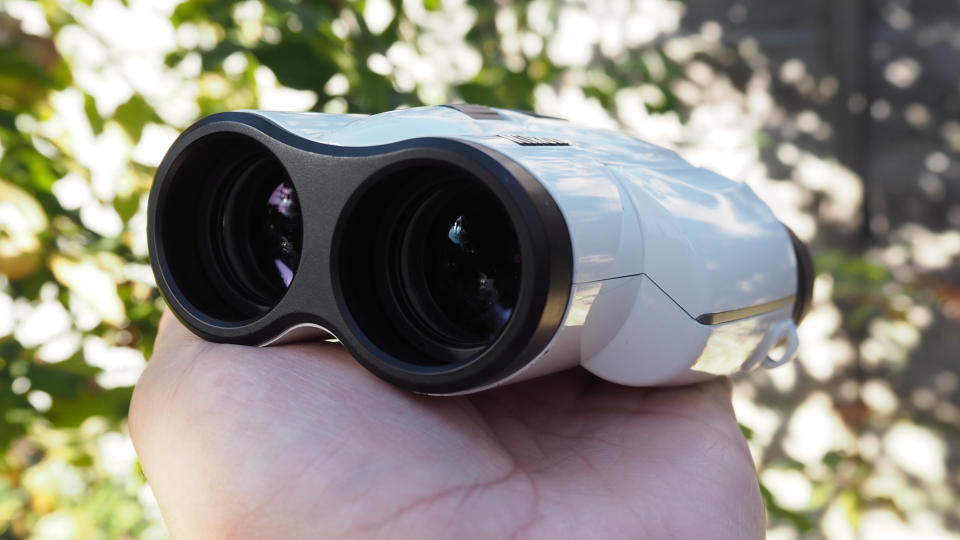
Despite the glossy plastic exterior to the Nikon Sportstar Zoom 8-24x25 binocular, there’s enough weight and heft that we found it easy enough to hold them steady when observing. Inevitiably though, the further we went up the magnification range amplified any exterior hand wobble, with resultant image judder.
This was never to the extent where it proved detrimentally distracting however. At maximum magnification we managed to pick up the twitching whiskers of a healthy looking rat encircling our local pond, and the facial expressions of humans 200 yards or more away. For travel and sports, we can really see this product coming into its own, as we pan and follow the action with the device on its basic 8x magnification setting, and then, once we’ve chosen our visual quarry, nudge the zoom lever up the scale towards maximum 24x to really focus in on detail. The size of the device and the fact that it will fit in a jacket pocket means that we won’t mind taking it to the game, or the race track, with us either.
Verdict
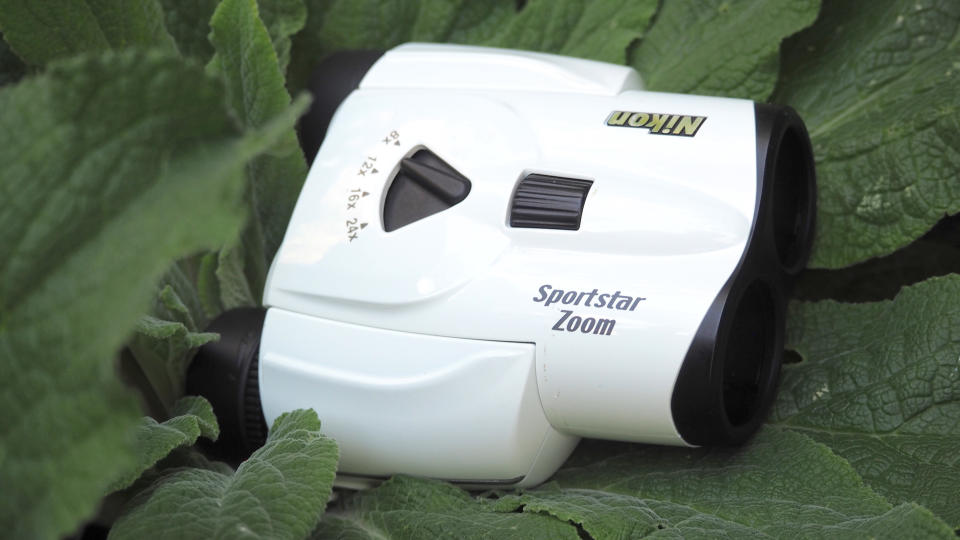
The only real downside to the Nikon Sportstar Zoom 8-24x25 binocular is that its clever construction and attendant specifications mean that it costs a bit more than a basic 8x25 pair. But being able to follow play from afar and get close in on the detail of any wildlife or sporting activity that would otherwise be missed could well be worth it for sports enthusiasts or nature lovers. And once we’ve got used to the facility to zoom with our binocular, it will be hard to go back to a regular fixed magnification alternative.

